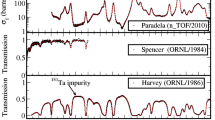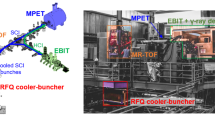Abstract
Man-made heavy-element production, previously accessible by successive neutron capture, has entered a new age by the invention of powerful heavy-ion accelerators. New insight in the fusion process and new experimental techniques have led to the discovery of two new elements with charge numbers 107 and 109 at GSI, the German Heavy Ion Research Laboratory. The production of very neutron-deficient Lu and Tm isotopes resulted in the discovery of a new mode of radioactive decay, proton radioactivity. Slow fusion of systems with nearly 500 nucleons as well as the dynamics of very fast fission processes have been studied. The future development investigating the properties of nuclear matter aims at high energy compression phenomena, onsets of which have been discovered recently by a joint group from GSI Darmstadt and the Lawrence Berkeley Laboratory.
Similar content being viewed by others
Author information
Authors and Affiliations
Rights and permissions
About this article
Cite this article
zu Putlitz, G., Siegert, G. Neue Elemente an der Grenze der Stabilität von Kernmaterie. Naturwissenschaften 70, 383–387 (1983). https://doi.org/10.1007/BF01047174
Received:
Issue Date:
DOI: https://doi.org/10.1007/BF01047174




